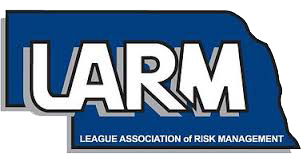
Joe trips on a bucket a co-worker left in a hallway and suffers a back injury. He can be at work again in a month but only to do very light-duty tasks. There may be surgeries, physical therapy appointments, and recovery time before Joe can perform his previous duties. Workers’ compensation insurance helps pay for some of the costs of an employee’s on-the-job work injury, but an employer should consider the other actual costs of injuries in the workplace.
The Occupational Health and Safety Administration (OSHA) provides an online calculator to estimate what a work injury costs a municipality or private business. For instance, entering into the calculator a sprain suffered by an employee may cost $30,000 in a Workers’ Comp claim, but the OSHA worksheet calculates an additional $33,000 in costs to the employer in missed work time and disruption in the workplace.
The injured employee’s co-workers will need to fill in for the duties that the injured employee can no longer do or can only do at a reduced capacity which takes away from their work. Projects may have to be postponed or canceled with the reduced workforce unable to do the job.
Injuries in any workplace are a hardship for the employee and the municipality. That’s why it is vital that everyone, from elected officials to the people in the field, be committed to safety. It needs to be part of the culture of every city or village. Here are some ideas to help make your community have a culture of safety:
1. Hire qualified people. A municipality is asking for extra costs and the possibility of a liability claim if they do otherwise.
2. Test for drug use. Have a policy on zero tolerance for illegal drug use in the workplace to ensure no one is working under the influence of dangerous drugs.
3. Develop a training manual so an employee has an easy reference point about the safe and proper use of a piece of equipment.
4. Require regular safety training for all staff.
5. Provide the correct equipment, time, and space for employees to do their jobs safely.
6. Avoid overtime when possible. It’s estimated that a worker is 60% more likely to be injured when working extra hours.
7. Use incentives to encourage employees to be safe, like having a drawing for a gift card after so many days without an injury or accident.
8. Document and discuss near misses. This can be done at regularly held safety committee meetings.
A safety culture in a municipality takes time and commitment to develop but lives and the success of a city government operation may depend on it.
LARM has magnetic memo boards for members to encourage an injury-free workplace. Contact Diane at diane.becker@larmpool.org or James at james.kelley@larmpool.org for one of these memo boards.
